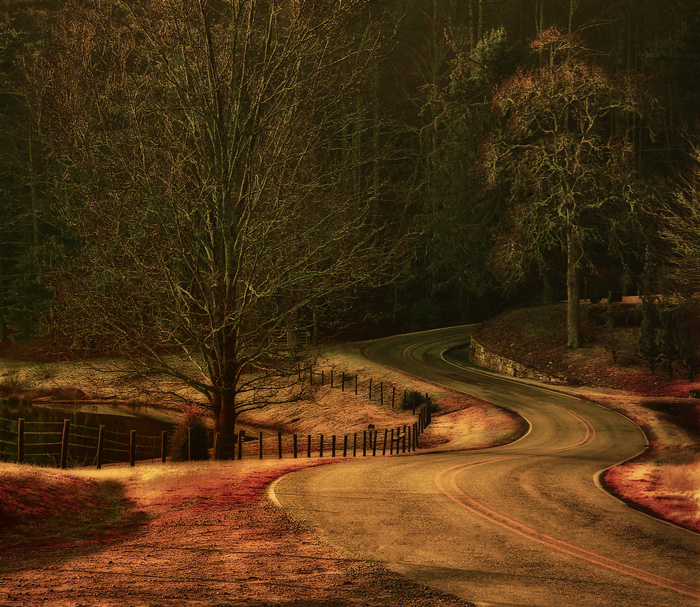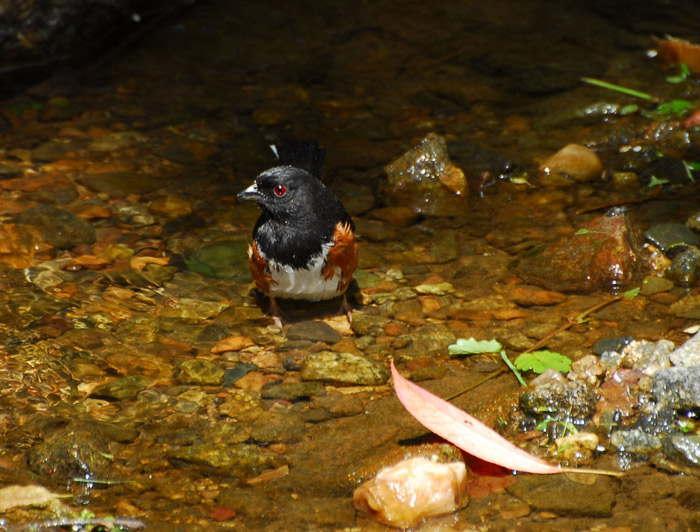Instant replay
Nov 12, 2009
Fall's not done falling yet in some parts of the world, such as the Turkey Farm Road area of Orange County, North Carolina. That's a red maple, all right.
Nov 12, 2009
Fall's not done falling yet in some parts of the world, such as the Turkey Farm Road area of Orange County, North Carolina. That's a red maple, all right.
Feb 1, 2010
Every summer, the U.S. Department of Agriculture contracts with pilots around the country to fly over every square inch of American farmland taking pictures. They use the imagery to figure out how well crops are growing, and exactly how much land is being used for various kinds of crops. But more importantly, they turn the imagery over to state government GIS departments, which have come up with thousands of uses for seamlessly mosaicked pictures of almost all the land in the United States.
The pictures show roads and cities and lakes and rivers, of course, as well as farm fields, so they make good base data for maps. They show changes in the landscape--e.g., new subdivisions and drained wetlands. Infrared bands in the imagery can show all sorts of details, including how much sediment there is in a river and how quickly a forest is coming back after a fire.
This picture started out as hazy USDA imagery from Orange County, North Carolina. I turned it upside down--south is now at the top--to make the shadows look "normal"--flip it back 180 degrees and see for yourself how strange it looks; the wooded areas, with all their shadows, look like sunken green and brown depressions amid smooth, raised crop fields. That's because our eyes have been "trained" by centuries of hand-shaded maps to expect the source of "light" to be in the upper-left corner, even though in real life the sun is never in the northwest quadrant of the sky (except down under, in the southern hemisphere). This is one of many reasons why satellite and aerial images, while fascinating to look at and extremely helpful in mapmaking, do not themselves make attractive backgrounds for maps. Unless we can accustom ourselves to putting south at the top.....
Jan 19, 2011

He looked the way a pirate ought to look, with most of his face buried beneath a thick black beard and his head wreathed in smoke from the cannon fuses he wore under his hat.
And he was in fact a pirate's pirate, looting more than fifty ships in the early years of the eighteenth century, including many vessels "belonging" to other pirates. If you surrendered without incident, he would likely strip your ship of rum and treasure and then let you loose to limp your way home. If you resisted, however, he would fight his way on board, steal all supplies and valuables, put off any surviving crewmen into a small boat, and then burn the ship, unless he had use for it.
At one point he assembled a large enough flotilla to blockade the port of Charleston, South Carolina. People feared him so much that the governor of North Carolina, Charles Eden, offered to pardon him if he would just give up his piratical ways. He accepted the offer, set up headquarters just outside the colonial capital at Bath, and proceeded to capture a French ship offshore, insisting that he'd found it floating abandoned and derelict. Governor Eden accepted sixty hogsheads of sugar from the ship and agreed that the ship must have been derelict when Blackbeard happened upon it.
Blackbeard also went by the name Edward Teach or Thach, but the custom at the time was for pirates to invent new names for themselves, so as not to disgrace their families. Almost nothing is known about his background, except that he is probably from Bristol, England, and he likely knew how to read and write. His piratical feats first drew widespread notoriety in 1716, and he was killed in battle at Ocracoke Inlet less than three years later, in late 1718.
A couple of weeks ago, a team of divers sponsored by National Geographic searched an inlet near Beaufort, North Carolina, where Blackbeard was believed to have intentionally grounded one of his ships; they found the hilt of a sword that matches the description of one of his two personal swords. The rest of his treasure is . . . .
Jul 20, 2011
 The trees in Etowah, North Carolina, are naked in this shot–and they look fine–but it's really the road here that's got the moves.
The trees in Etowah, North Carolina, are naked in this shot–and they look fine–but it's really the road here that's got the moves.
Apr 4, 2012
 This rufous-sided towhee–aka Eastern towhee–is bathing in a creek in Randolph County, North Carolina. Red eyes are natural with towhees.
This rufous-sided towhee–aka Eastern towhee–is bathing in a creek in Randolph County, North Carolina. Red eyes are natural with towhees.
In case you were thinking that these Eastern towhees are really living the life, you should be aware that they commonly suffer severe bullying by mean girls of the somewhat larger Brownheaded Cowbird species. Cowbirds lay eggs almost constantly, like chickens, up to 40 a year, far more than they could ever raise themselves in nests of their own. So they lay their eggs in other birds' nests; they'll take advantage of any convenient nest regardless of the type of bird that built it, but towhees, who nest on the ground, are among their favorite surrogate brooders and baby-raisers.
In some parts of the country, more than 50% of towhee nests contain cowbird eggs in addition to towhee eggs. Some species of birds can tell the difference and will actually push the cowbird eggs right out of the nest, but towhees aren't that smart. Cowbirds, on the other hand, are very smart; to give their own eggs a better chance of survival, and to prevent discovery of what they've deposited in the nest by nest-owners who might know how to count, cowbirds often push some of the towhee eggs out of the nest when they lay their own.
Even worse, the cowbird babies grow faster and bigger than the towhee babies and soon muscle the towhees aside to claim all the food. They sometimes even knock the baby towhees right out of their own nest.
And even worse than that, because towhee nests are on the ground, under bushes, baby towhees may also be victimized by . . . our own sweet little Dobby the Miniature Dog. I believe that Dobby–who is terrified of cats and won't bark at the mailman until he's safely upstairs and under the covers–got himself a towhee last summer while I had him on a leash, waiting for a light to change at a busy intersection right in Center City, Philadelphia. Dobby suddenly dived into a brushy patch, and it was bye-bye, birdie.
Personally, I can't tell one species of cute, innocent, harmless baby bird from another. Maybe it wasn't a towhee, just some other kind of ground-nesting bird living under the bushes of Philadelphia. But thanks to the google, I found a website called ebird, on which I could locate 6 different lists of birds sighted by 3 different bird-watchers within a quarter-mile or so of where Dobby did the deed. Every single list included towhees.
I want to believe, however, that the baby that Dobby dispatched was not a towhee but . . . maybe a cowbird?
Feb 15, 2014
 Friday was a leapin' good snow day for dogs in Durham, North Carolina.
Friday was a leapin' good snow day for dogs in Durham, North Carolina.
Jan 25, 2015

From the Lockridge community near Durham, North Carolina, comes this photo and note from Carol Stack: "My first selfie, with birthday flowers."
This time of year also marks the birthday of our boy John, a.k.a. J.J. Good cheer to both, many happy returns, and let's hear it for one-eyed floral birthday selfies!